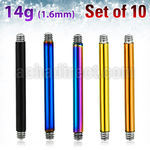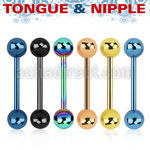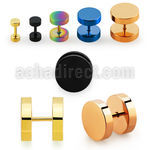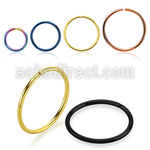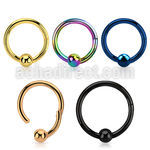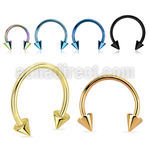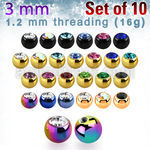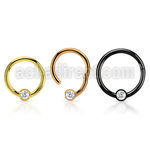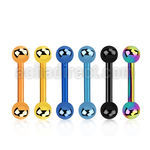Anodized Surgical Steel
Anodized Surgical Steel is a term used in the body jewelry to describe any surgical steel which has received a treatment to add color to the surface be it by plating it or by modifying the surface structure at a molecular level to change the wave length of the light it reflects to create colors. However when speaking technically correct anodizing is just one of the many ways used in the body jewelry manufacturing process to create colorful surgical steel body jewelry. From the great variety of processes which goes from the very cheap spray painted dirt cheap to the expensive zircon gold PVD plated the most commonly used process are the following.
1. Anodizing: This process can only be used with titanium and titanium coated surface and involves applying electricity this results in creating an titanium oxide layer on the surface of the body jewelry. By varying the voltage applied the thickness of the titanium oxide layer can be adjusted. The color formed is dependent on the thickness of the oxide layer and is created by the interference of light reflecting off the oxide surface with light traveling through it and reflecting off the underlying metal surface.
2. Electroplating: Is the standard process used to produce economic low quality body jewelry. For this process the piece to be plated is placed into a liquid solution and then an electric current is applied which transports the coating material and deposit it on the surface of the piece of jewelry. The end result is a coating which is easily scratches and will wear of within a few weeks when in continuous contact with the body.
3. PVD Plating is the commonly used colloquial term for Physical vapor deposition” In this process which is used to produce high quality body jewelry the pieces are placed in a vacuum chamber for plating and then an electric arc is used to remove molecules of the coating material which due to the high voltage current used is transformed into a highly high-energy plasma. The metal ions of the plasma combine with the reactive gas that is introduced into the chamber and strike the pieces of body jewelry with high energy. Which results in them being deposited as a thin and highly adherent coating. Once the process is completed these coating are highlight scratch and wear resistant.
4. Ion plating: is another PVD process that makes use of reactive electron beam evaporation. For this the metallic component of the colored coating material (titanium) is evaporated by a electric arc of low-voltage.
5. And how about titanium anodized? This does not really exist and is a term which is not used outside the body jewelry industry because it is simply a trading name created by Chinese body jewelry manufactures for body jewelry which is first plated with a very thin coat of titanium which is later anodized. Which results in nice bright colors which however are very easy to flake off since the titanium coat does not adhere firmly to the surgical steel below.


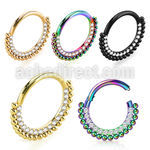
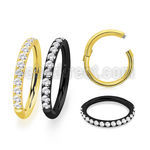
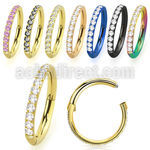
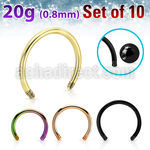

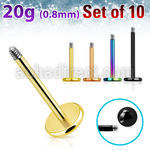
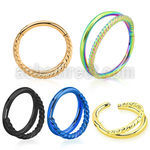
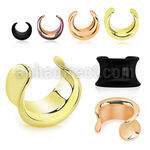

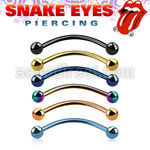
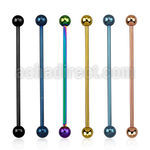
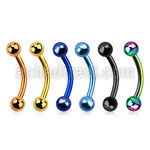

.jpg)

